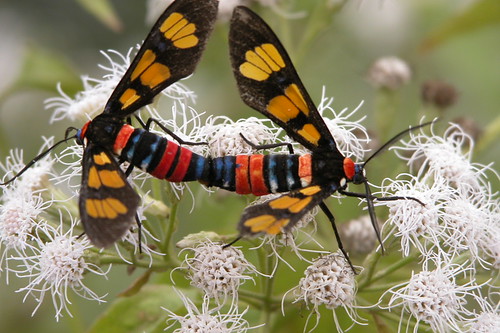These beautiful creatures are day-flying moths from the family Ctenuchidae,
in the process of mating.
This picture was taken in Kerala, southern India by a reader, Basia. You can read
more about these insects at India Ink.
Image: Basia Kruszewska.
.
"Insects commonly remain together for hours when mating. However, the actual sperm transfer occurs quickly," says Phil Nixon, an entomologist at the University of Illinois at Urbana-Champaign.
"In many insects, the female's eggs are fertilized by the sperm of the last male to mate with her before the eggs are laid. It is thought that the male remaining attached to the female makes it more likely that that male's sperm will be used in egg fertilization. Insects that couple for long periods are also able to fly while coupled."
Nixon kindly identified these insects for the photographer.
If you have a high-resolution digitized nature image that you'd like to share with your fellow readers, feel free to email it to me, along with information about the image and how you'd like it to be credited.
.


"Insects that couple for long periods are also able to fly while coupled."
This is not news to anyone who's ever driven through Georgia during love-bug season!
But these guys are much more colorful those those.
I love ctenuchids (ctenuchine arctiids for those lumpers out there). The only one that I know of in the northeastern U.S. is Ctenucha virginica, not as colorful as those above but quite the beauty in its own right.